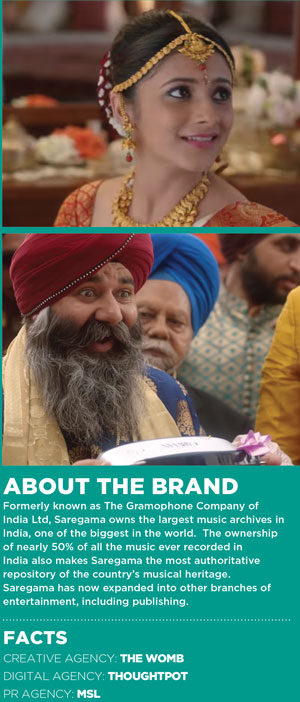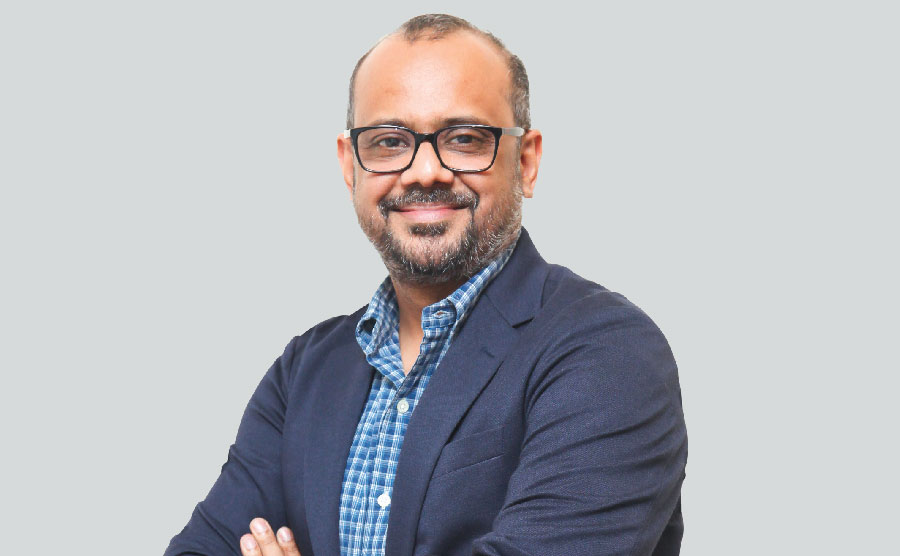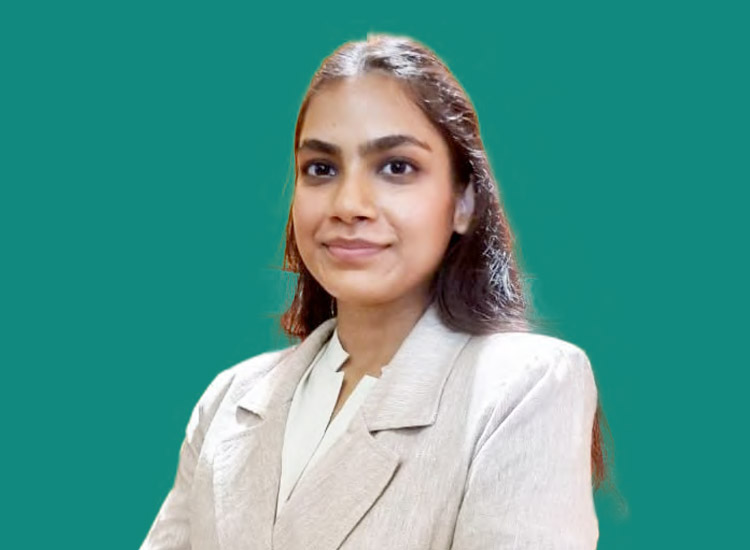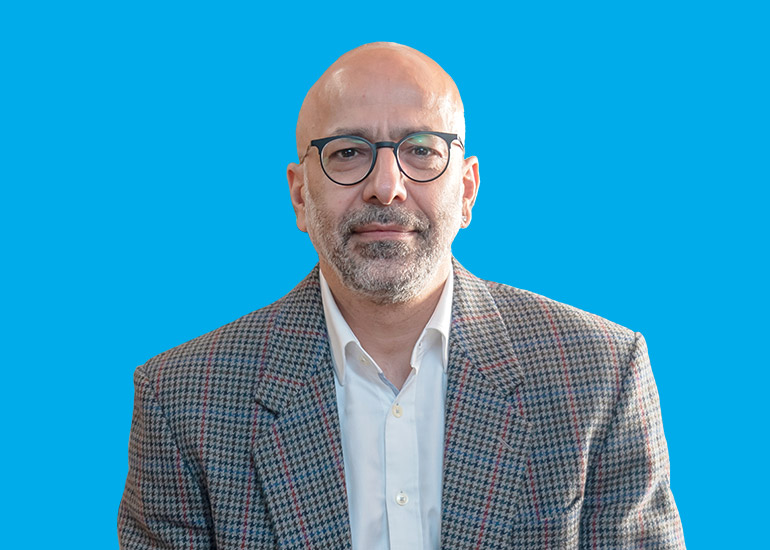Q] When Saregama launched Carvaan, there were lots of talks about the format – whether people would be interested in a product like this. Fast forward to now, how has the brand’s journey been so far?
The genesis of Carvaan was simple. Our business was that of selling cassettes and CDs. However, with time, the ecosystem around physical cassettes and CDs just died. With the advent of Digital, people could listen to music on their phones. However, for people of the older generation, that’s not a very enticing idea, it’s not something they are used to. Our research showed that a majority of that age group had simply stopped listening to music and it was ironical because when this population was young, there was no social media. All they had was the radio but advancements in technology took that away from them. Our research also gave us the reasons why people liked using the radio, it was owing to the device’s simplicity. And that was the genesis of Carvaan. It has been a very rewarding journey so far. We recently touched 1 million units in just one and a half years since our launch.
Q] You went to a lot of people with your product prototype as a way of market research. What were some of the initial reactions?
When you have to sell a completely new concept, people will have a lot of questions and they will be skeptical. However, we were very sure about our product. So, yes there was a lot of research, but we also followed our gut. We went to metros as well as smaller cities, reached out to different age groups. We got the real confidence for the product from the reactions of consumers. Many of the older people would say ‘Give me one’, the moment we would explain the concept to them.
 Q] So is the 40-and-above age group still your primary target audience or are you also targeting the younger population?
Q] So is the 40-and-above age group still your primary target audience or are you also targeting the younger population?
Yes, they continue to be our primary audience. When you talk to the younger generation today, they are on the lookout for reinterpretations of old songs by younger singers. They aren’t much interested in Mukesh or Rafi. Also, there’s the least competition in that TG. Close to one-third of the population is over 40, so we want to focus on that segment.
Q] As of today, how many units have you sold?
We have sold around 11 lakh units.
Q] The Womb has played a very critical role in the brand’s journey…
I’ve worked with Tata Sky in the past and understanding consumer behavior had been one of my strengths. That is The Womb’s strength too. The team there comprises ex-Ogilvy people. They had been our partners since before we launched Carvaan when we worked on multiple projects, trying to figure out how to grow further. The idea came about once when we were sitting together in a big library, simply exchanging ideas. And among many other ideas, this was one thought. However, this was the one idea that all of us collectively agreed on. They had as much conviction in the product as we did. And even today, they are our creative and marketing agency.
Q] How did you zero in on the transistor-like look for the product?
Once we were clear about what we wanted the product to be, the design was a no-brainer, considering we wanted it to be about nostalgia. The best part is, industry experts in marketing agencies and designing firms don’t believe it when we tell them it was all done in-house. The product was designed completely in-house by our creative team. The design was based on a line we often heard during our research, ‘Beta, radio ka zamaana achha tha’.
Q] When you launched, there was hardly any marketing done around the product. How did you go about generating a buzz around Carvaan initially?
We didn’t advertise at all for the first six months. And I give credit to our PR agency for the interest that was created around the product. Frankly, the product was unique and was also fulfilling a big need of consumers and therefore we believed we didn’t need to advertise much. Earlier, there was a mismatch in our demand and supply too because we never thought we would sell so much.
Q] What made you change your strategy?
We want our product to reach out to more and more people, whether they live in the metros or some remote city. Our efforts are simply to pace up the awareness of the brand so that it can reach out to and touch more lives. There is a population of around 3 crore who we think need this product and we just want to reach out to them.
Q] So you are targeting 3 crore consumers?
I don’t see any reason why we should not be able to reach that number.
Q] Since the product has a lot to do with nostalgia, are you also targeting Indians settled outside India?
We are already present in the US, the UK and the Middle East. We have put up stores at airports. While we see some revenue coming from the global markets, its nothing compared to what we’re seeing in India.
Q] You have recently launched a premium version of Carvaan? How is it different from the regular product?
Though the concept of radio used to mean that you could only listen to the songs being played on the device, without being able to choose, we realised that a lot of consumers wanted some amount of control over what they want to listen to. It could be that desire to want to listen to one particular song at a particular time in the day. So we worked around that and have come up with an app which lets you control the songs through your mobile. The premium offering is priced at Rs 7,390.
Q] What is your current retail presence?
Initially we launched in the metros but today, we are present in around 20,300 retail outlets across 230 cities. If any city has a population of 50,000 or more, Carvaan is available there.
Q] Are you also coming up with language-specific products?
We have already launched Carvaan in Tamil, Marathi and Bengali. We are looking at a few more languages like Punjabi, Malayalam and Telugu. Very soon, we are also going to launch a Carvaan with devotional songs.
The genesis of Carvaan was simple. Our business was that of selling cassettes and CDs. However, with time, the ecosystem around physical cassettes and CDs just died. With the advent of Digital, people could listen to music on their phones. However, for people of the older generation, that’s not a very enticing idea, it’s not something they are used to. Our research showed that a majority of that age group had simply stopped listening to music and it was ironical because when this population was young, there was no social media. All they had was the radio but advancements in technology took that away from them. Our research also gave us the reasons why people liked using the radio, it was owing to the device’s simplicity. And that was the genesis of Carvaan. It has been a very rewarding journey so far. We recently touched 1 million units in just one and a half years since our launch.
Q] You went to a lot of people with your product prototype as a way of market research. What were some of the initial reactions?
When you have to sell a completely new concept, people will have a lot of questions and they will be skeptical. However, we were very sure about our product. So, yes there was a lot of research, but we also followed our gut. We went to metros as well as smaller cities, reached out to different age groups. We got the real confidence for the product from the reactions of consumers. Many of the older people would say ‘Give me one’, the moment we would explain the concept to them.
 Q] So is the 40-and-above age group still your primary target audience or are you also targeting the younger population?
Q] So is the 40-and-above age group still your primary target audience or are you also targeting the younger population? Yes, they continue to be our primary audience. When you talk to the younger generation today, they are on the lookout for reinterpretations of old songs by younger singers. They aren’t much interested in Mukesh or Rafi. Also, there’s the least competition in that TG. Close to one-third of the population is over 40, so we want to focus on that segment.
Q] As of today, how many units have you sold?
We have sold around 11 lakh units.
Q] The Womb has played a very critical role in the brand’s journey…
I’ve worked with Tata Sky in the past and understanding consumer behavior had been one of my strengths. That is The Womb’s strength too. The team there comprises ex-Ogilvy people. They had been our partners since before we launched Carvaan when we worked on multiple projects, trying to figure out how to grow further. The idea came about once when we were sitting together in a big library, simply exchanging ideas. And among many other ideas, this was one thought. However, this was the one idea that all of us collectively agreed on. They had as much conviction in the product as we did. And even today, they are our creative and marketing agency.
Q] How did you zero in on the transistor-like look for the product?
Once we were clear about what we wanted the product to be, the design was a no-brainer, considering we wanted it to be about nostalgia. The best part is, industry experts in marketing agencies and designing firms don’t believe it when we tell them it was all done in-house. The product was designed completely in-house by our creative team. The design was based on a line we often heard during our research, ‘Beta, radio ka zamaana achha tha’.
Q] When you launched, there was hardly any marketing done around the product. How did you go about generating a buzz around Carvaan initially?
We didn’t advertise at all for the first six months. And I give credit to our PR agency for the interest that was created around the product. Frankly, the product was unique and was also fulfilling a big need of consumers and therefore we believed we didn’t need to advertise much. Earlier, there was a mismatch in our demand and supply too because we never thought we would sell so much.
Q] What made you change your strategy?
We want our product to reach out to more and more people, whether they live in the metros or some remote city. Our efforts are simply to pace up the awareness of the brand so that it can reach out to and touch more lives. There is a population of around 3 crore who we think need this product and we just want to reach out to them.
Q] So you are targeting 3 crore consumers?
I don’t see any reason why we should not be able to reach that number.
Q] Since the product has a lot to do with nostalgia, are you also targeting Indians settled outside India?
We are already present in the US, the UK and the Middle East. We have put up stores at airports. While we see some revenue coming from the global markets, its nothing compared to what we’re seeing in India.
Q] You have recently launched a premium version of Carvaan? How is it different from the regular product?
Though the concept of radio used to mean that you could only listen to the songs being played on the device, without being able to choose, we realised that a lot of consumers wanted some amount of control over what they want to listen to. It could be that desire to want to listen to one particular song at a particular time in the day. So we worked around that and have come up with an app which lets you control the songs through your mobile. The premium offering is priced at Rs 7,390.
Q] What is your current retail presence?
Initially we launched in the metros but today, we are present in around 20,300 retail outlets across 230 cities. If any city has a population of 50,000 or more, Carvaan is available there.
Q] Are you also coming up with language-specific products?
We have already launched Carvaan in Tamil, Marathi and Bengali. We are looking at a few more languages like Punjabi, Malayalam and Telugu. Very soon, we are also going to launch a Carvaan with devotional songs.























